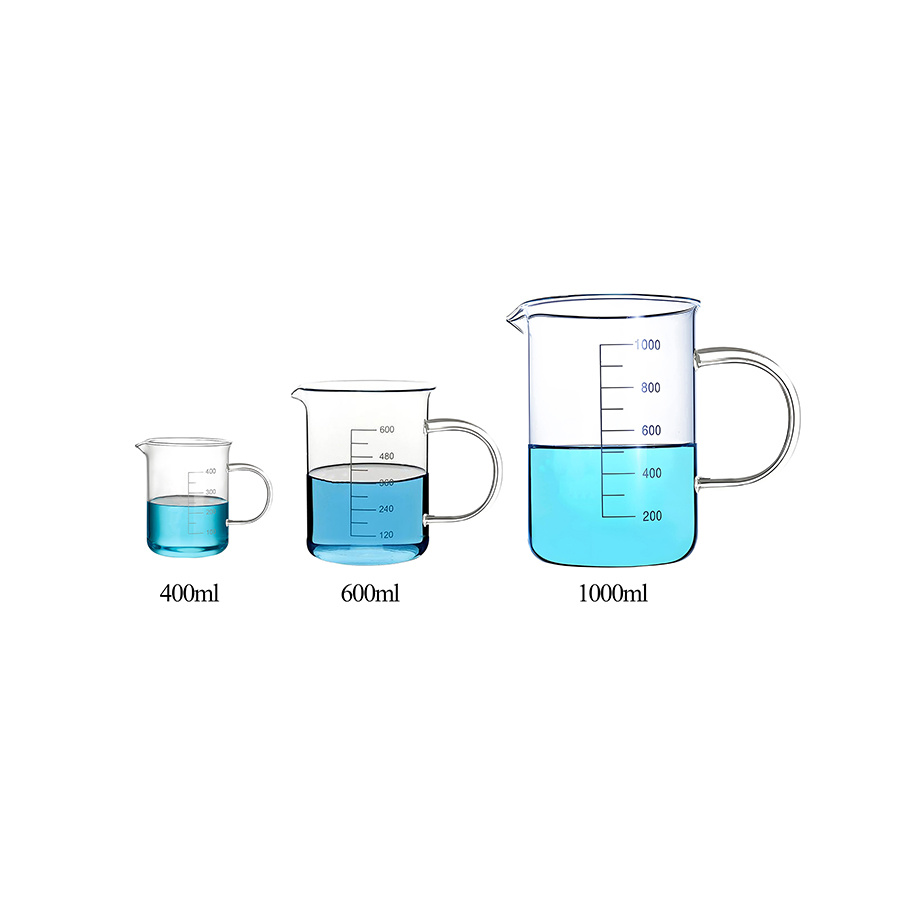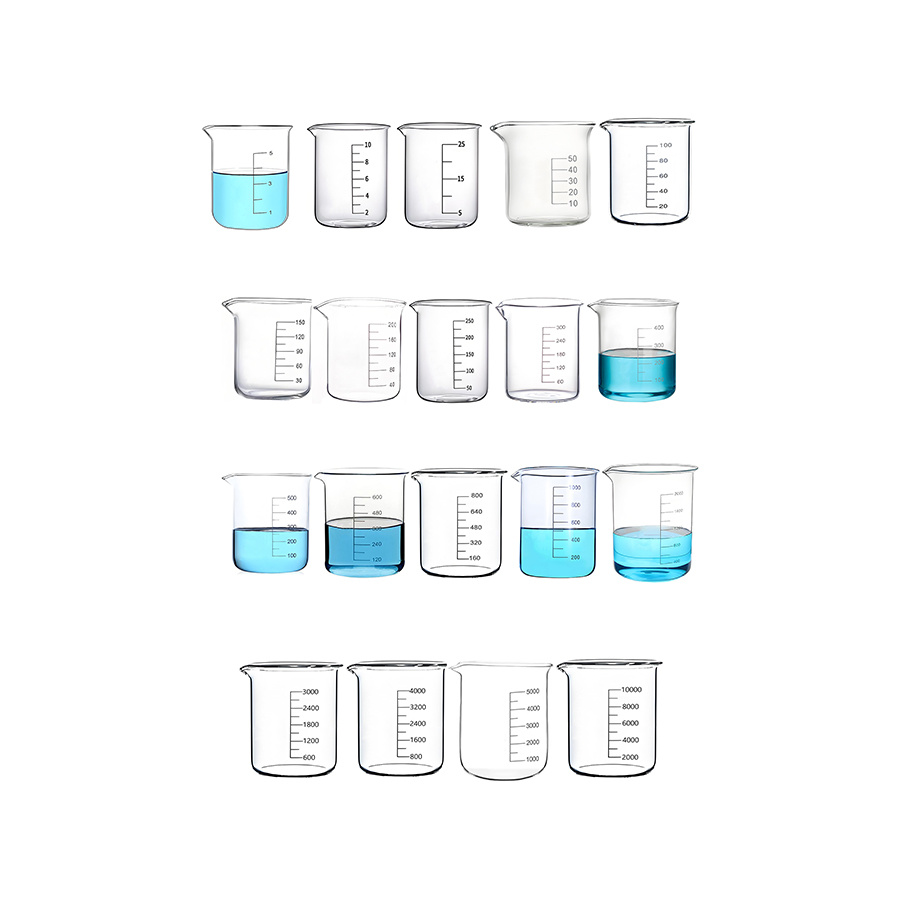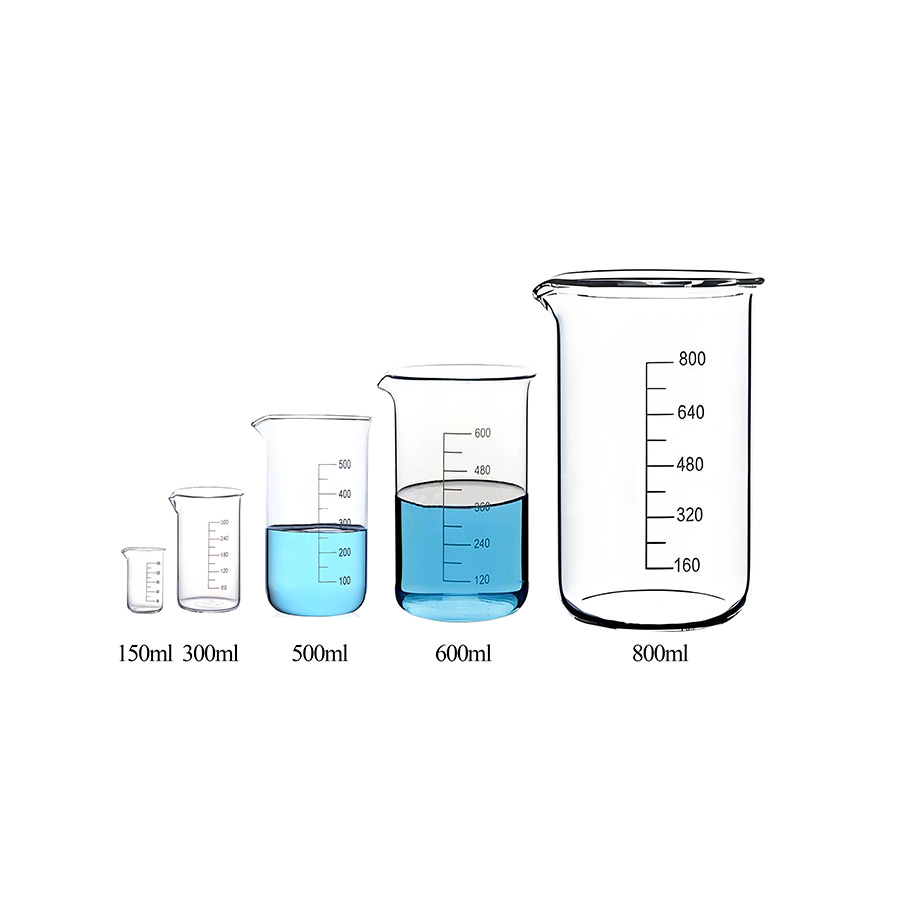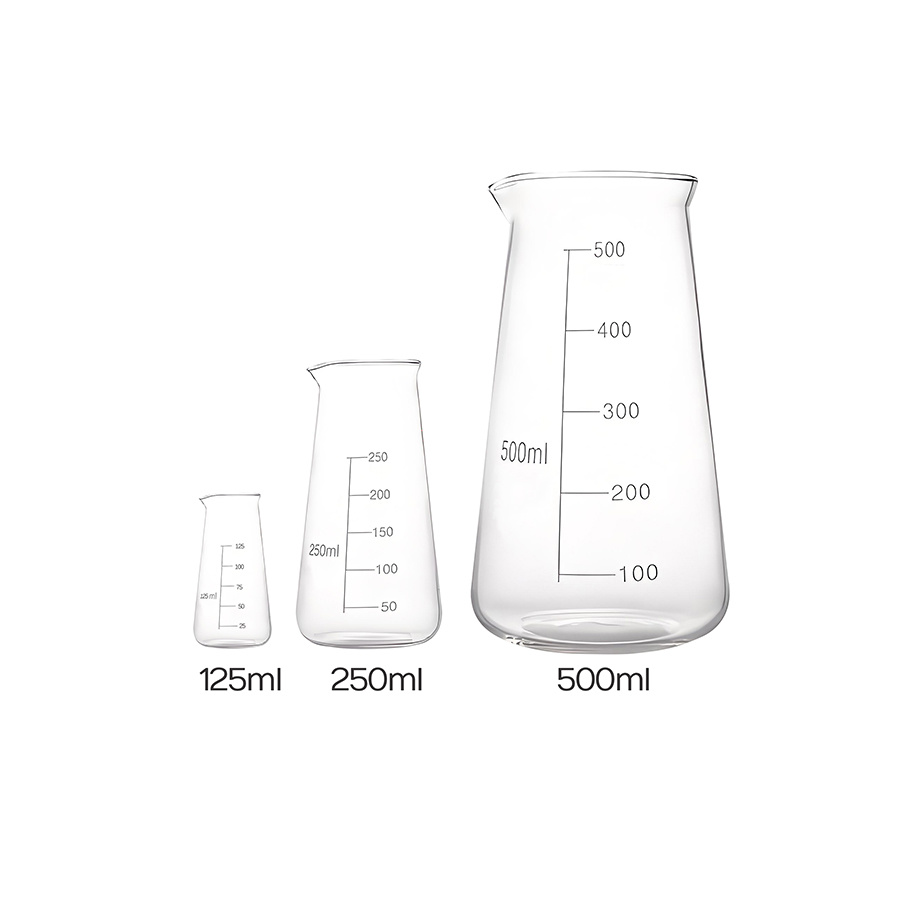Quality Assured
Just Buy It
- Comparison
- 在线预约
- 预约申请
- 样品申请
- 在线询价
Test Tubes With Rim
Test Tubes With Rim
TT-W

Brand:
RUISCI
-
Click to select
- TT-W-10,10mm,75mm,2000Pcs
- TT-W-10A,10mm,100mm,2000Pcs
- TT-W-12,12mm,75mm,2000Pcs
- TT-W-12A,12mm,100mm,2000Pcs
- TT-W-13,13mm,100mm,2000Pcs
- TT-W-13A,13mm,130mm,2000Pcs
- TT-W-15,15mm,100mm,1000Pcs
- TT-W-15A,15mm,150mm,1000Pcs
- TT-W-16,16mm,125mm,1000Pcs
- TT-W-16A,16mm,150mm,1000Pcs
- TT-W-18,18mm,150mm,600Pcs
- TT-W-18A,18mm,180mm,600Pcs
- TT-W-21,21mm,150mm,400Pcs
- TT-W-21A,21mm,180mm,400Pcs
- TT-W-21B,21mm,200mm,400Pcs
- TT-W-25,25mm,150mm,300Pcs
- TT-W-25A,25mm,180mm,300Pcs
- TT-W-25B,25mm,200mm,200Pcs
- TT-W-30,30mm,200mm,200Pcs
- TT-W-41,41mm,225mm,200Pcs
- TT-W-10-E,10mm,75mm,1Pcs
- TT-W-10A-E,10mm,100mm,1Pcs
- TT-W-12-E,12mm,75mm,1Pcs
- TT-W-12A-E,12mm,100mm,1Pcs
- TT-W-13-E,13mm,100mm,1Pcs
- TT-W-13A-E,13mm,130mm,1Pcs
- TT-W-15-E,15mm,100mm,1Pcs
- TT-W-15A-E,15mm,150mm,1Pcs
- TT-W-16-E,16mm,125mm,1Pcs
- TT-W-16A-E,16mm,150mm,1Pcs
- TT-W-18-E,18mm,150mm,1Pcs
- TT-W-18A-E,18mm,180mm,1Pcs
- TT-W-21-E,21mm,150mm,1Pcs
- TT-W-21A-E,21mm,180mm,1Pcs
- TT-W-21B-E,21mm,200mm,1Pcs
- TT-W-25-E,25mm,150mm,1Pcs
- TT-W-25A-E,25mm,180mm,1Pcs
- TT-W-25B-E,25mm,200mm,1Pcs
- TT-W-30-E,30mm,200mm,1Pcs
- TT-W-41-E,41mm,225mm,1Pcs
Inventory
10720
隐藏域元素占位
Overview
Laboratory test tubes are common experimental apparatuses, typically cylindrical glassware with one open end and the other closed. They have good transparency and chemical stability and are suitable for various experimental operations such as chemical reactions, sample storage, and microbial culture. Common types include flat-mouth test tubes, with a flattened and fire-polished mouth; flared-mouth test tubes, with a flared mouth to increase mechanical strength and facilitate gripping without dropping; graduated test tubes, which are glass tubes with scale markings for precise liquid volume measurement; and stoppered graduated test tubes, which have both scale markings and a stopper for precise measurement and storage of liquid samples.
Features
1. Transparency: The test tubes are made of high borosilicate glass, which has excellent transparency, allowing for easy observation of the reaction process and sample state inside the tube.
2. Chemical stability: Glass test tubes have outstanding chemical stability and can withstand the corrosion of various chemical reagents, making them suitable for chemical reactions involving acids, bases, salts, and other substances.
3. Heat resistance: Test tubes can withstand certain high temperatures and can usually be directly heated on an alcohol lamp or electric hot plate, making them suitable for chemical reactions that require heating.
4. Graduated test tubes and stoppered graduated test tubes: The graduations are clear and accurate, providing a reliable basis for experiments such as solution preparation and quantitative analysis, ensuring the accuracy and repeatability of experimental data.
5. Flanged test tubes: The mouth of the test tube is flanged to increase mechanical strength, making it easier to grip during use and less likely to fall off.
Technical data
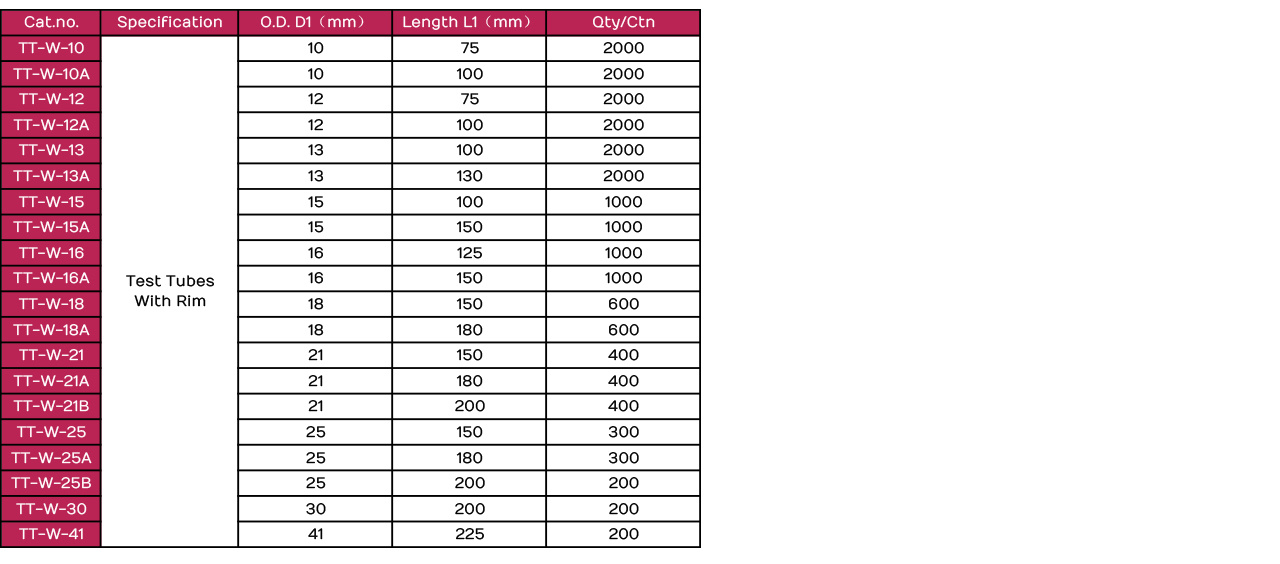
Working environment conditions:
1. Temperature range: It can withstand high temperatures up to 820℃, but it is recommended that the usage temperature does not exceed 500℃ to avoid deformation caused by long-term high temperatures. It can also withstand low temperatures down to -190℃.
2. Chemical environment: It has good chemical resistance and can resist the corrosion of various acids, alkalis and other chemical substances, making it suitable for holding and handling various chemical reagents.
3. Mechanical strength: It has certain mechanical strength and can withstand certain mechanical stress, but should avoid strong impacts and collisions.
4. Cleanliness: The laboratory environment should be kept clean. Before use, ensure that the test tube is clean to guarantee the accuracy of the experimental results.
Precautions:
1. Avoid sudden temperature changes: Although high borosilicate glass has good thermal shock resistance, it is still advisable to avoid suddenly placing the test tube from a high-temperature environment into a low-temperature environment or vice versa to reduce the impact of thermal stress on the test tube and extend its service life.
2. Even heating: When heating, use the outer flame or edge of the flame or heat source to ensure even heating of the test tube and avoid local overheating that may cause the test tube to crack. At the same time, preheat the test tube before heating and gradually increase the temperature.
3. Correct holding: When holding the test tube, use a test tube holder or wear protective gloves to avoid direct contact with the test tube to prevent burns or frostbite due to high or low temperatures. At the same time, hold the test tube near the middle-upper part to maintain its stability.
4. Avoid collision and dropping: Although high borosilicate glass test tubes have certain impact resistance, they should still be used with care to avoid collisions with other hard objects or dropping from heights to prevent breakage.
5. Cleaning and disinfection: After use, clean the test tube in a timely manner to avoid residues affecting subsequent experiments. When cleaning, use a test tube brush and detergent. For stubborn stains, ultrasonic cleaning can be used. After cleaning, disinfection treatment should be carried out to ensure the cleanliness and sterility of the test tube.
6. Clear marking: When marking sample names, dates, etc. on the test tube, use a non-fading marker to ensure clear and distinguishable markings for easy experimental record-keeping and tracking.
7. Storage and preservation: Unused test tubes should be properly stored in a dry and clean environment, avoiding direct sunlight and moisture to prevent the test tube from getting damp or developing stains on the surface. At the same time, place the test tubes on test tube racks or dedicated containers to avoid random stacking and prevent damage to the test tubes.
keyword:
Test Tube
Test Tubes Without Rim
Test Tubes With Rim
Test Tube With Graduation
Test Tube With Graduation And Ground-in Glass Stopper
Previous:
Next:
- 产品描述
- 概要参数
- 技术参数
-
- Brand: RUISCI
- Commodity name: Test Tubes With Rim
- Subtitle: Test Tubes With Rim
- Model: TT-W
- 全部型号: TT-W-10,TT-W-10A,TT-W-12,TT-W-12A,TT-W-13,TT-W-13A,TT-W-15,TT-W-15A,TT-W-16,TT-W-16A,TT-W-18,TT-W-18A,TT-W-21,TT-W-21A,TT-W-21B,TT-W-25,TT-W-25A,TT-W-25B,TT-W-30,TT-W-41, Test Tube, Test Tubes Without Rim, Test Tubes With Rim, Test Tube With Graduation, Test Tube With Graduation And Ground-in Glass Stopper
Laboratory test tubes are common experimental apparatuses, typically cylindrical glassware with one open end and the other closed.
Laboratory test tubes are common experimental apparatuses, typically cylindrical glassware with one open end and the other closed. They have good transparency and chemical stability and are suitable for various experimental operations such as chemical reactions, sample storage, and microbial culture. Common types include flat-mouth test tubes, with a flattened and fire-polished mouth; flared-mouth test tubes, with a flared mouth to increase mechanical strength and facilitate gripping without dropping; graduated test tubes, which are glass tubes with scale markings for precise liquid volume measurement; and stoppered graduated test tubes, which have both scale markings and a stopper for precise measurement and storage of liquid samples.
-
1. Transparency: The test tubes are made of high borosilicate glass, which has excellent transparency, allowing for easy observation of the reaction process and sample state inside the tube.
2. Chemical stability: Glass test tubes have outstanding chemical stability and can withstand the corrosion of various chemical reagents, making them suitable for chemical reactions involving acids, bases, salts, and other substances.
3. Heat resistance: Test tubes can withstand certain high temperatures and can usually be directly heated on an alcohol lamp or electric hot plate, making them suitable for chemical reactions that require heating.
4. Graduated test tubes and stoppered graduated test tubes: The graduations are clear and accurate, providing a reliable basis for experiments such as solution preparation and quantitative analysis, ensuring the accuracy and repeatability of experimental data.
5. Flanged test tubes: The mouth of the test tube is flanged to increase mechanical strength, making it easier to grip during use and less likely to fall off. -

Working environment conditions:
1. Temperature range: It can withstand high temperatures up to 820℃, but it is recommended that the usage temperature does not exceed 500℃ to avoid deformation caused by long-term high temperatures. It can also withstand low temperatures down to -190℃.
2. Chemical environment: It has good chemical resistance and can resist the corrosion of various acids, alkalis and other chemical substances, making it suitable for holding and handling various chemical reagents.
3. Mechanical strength: It has certain mechanical strength and can withstand certain mechanical stress, but should avoid strong impacts and collisions.
4. Cleanliness: The laboratory environment should be kept clean. Before use, ensure that the test tube is clean to guarantee the accuracy of the experimental results.
Precautions:
1. Avoid sudden temperature changes: Although high borosilicate glass has good thermal shock resistance, it is still advisable to avoid suddenly placing the test tube from a high-temperature environment into a low-temperature environment or vice versa to reduce the impact of thermal stress on the test tube and extend its service life.
2. Even heating: When heating, use the outer flame or edge of the flame or heat source to ensure even heating of the test tube and avoid local overheating that may cause the test tube to crack. At the same time, preheat the test tube before heating and gradually increase the temperature.
3. Correct holding: When holding the test tube, use a test tube holder or wear protective gloves to avoid direct contact with the test tube to prevent burns or frostbite due to high or low temperatures. At the same time, hold the test tube near the middle-upper part to maintain its stability.
4. Avoid collision and dropping: Although high borosilicate glass test tubes have certain impact resistance, they should still be used with care to avoid collisions with other hard objects or dropping from heights to prevent breakage.
5. Cleaning and disinfection: After use, clean the test tube in a timely manner to avoid residues affecting subsequent experiments. When cleaning, use a test tube brush and detergent. For stubborn stains, ultrasonic cleaning can be used. After cleaning, disinfection treatment should be carried out to ensure the cleanliness and sterility of the test tube.
6. Clear marking: When marking sample names, dates, etc. on the test tube, use a non-fading marker to ensure clear and distinguishable markings for easy experimental record-keeping and tracking.
7. Storage and preservation: Unused test tubes should be properly stored in a dry and clean environment, avoiding direct sunlight and moisture to prevent the test tube from getting damp or developing stains on the surface. At the same time, place the test tubes on test tube racks or dedicated containers to avoid random stacking and prevent damage to the test tubes.
Q and A
Q
Distribution Modes:
A
Default Distribution Mode: EXW China Factory: After your payment is received, our customer service will contact you to confirm the pickup time and location once the goods are ready at the RUISCI China factory.
*Other options:
1.Carriage Paid To (CPT)
DO NOT PAY until you have contacted customer service to add shipping costs, as the default price is EXW China factory.
2.Delivered Duty Paid(DDP)
DO NOT PAY until you have ·contacted customer service to add Freight, insurance, taxes, customs clearance fees, and other miscellaneous expenses, as the default price is EXW China factory. Typically applies exclusively to small air cargo packages.
3. FOB China main port
DO NOT PAY until you have contacted customer service to add the inland charges and export declaration charges, as the default price is EXW China factory.
*** If you still need to consult other distribution modes or trade terms, please contact our customer service directly
Q
Payment methods:
A
1. On-line payment: Paypal
2. Off-line payment: Telegraphic Transfer (TT)
*All charges, except those incurred within our bank, are to be borne by the remitter. Insufficient payment will delay your shipment.
Download
There is currently no content to display
Related products
Online consultation




